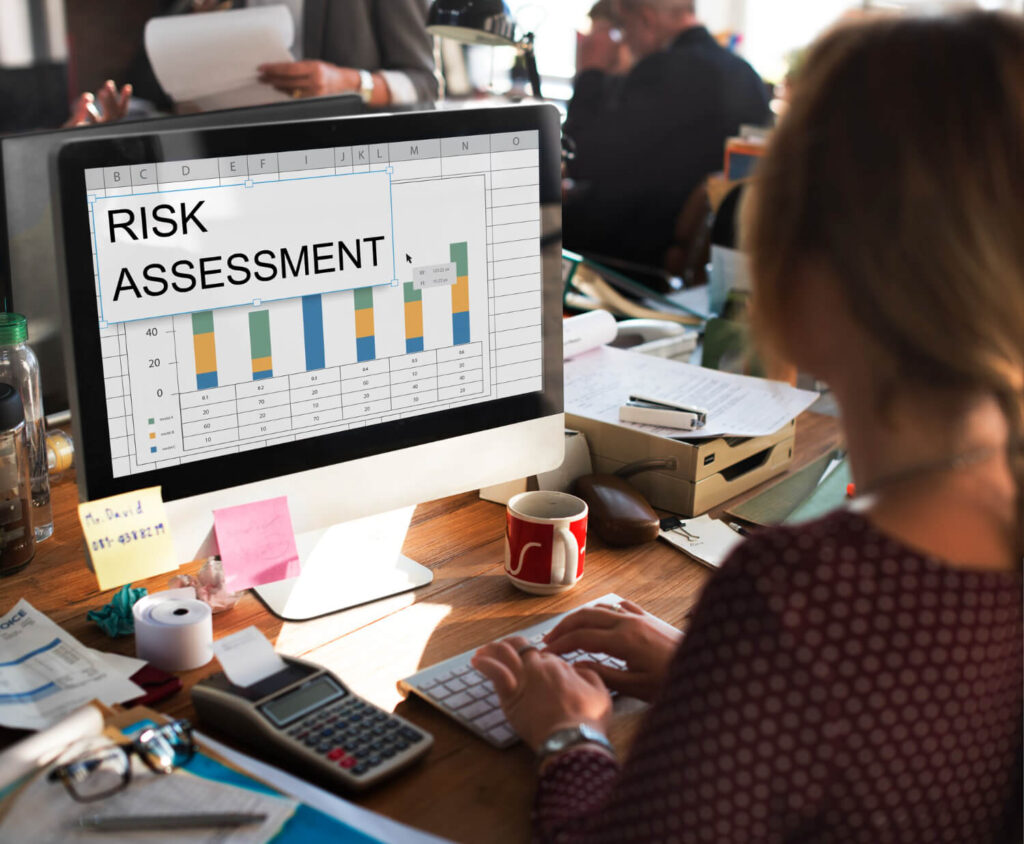
Introduction
Africa’s digital economy is expanding faster than almost any other region in the world. From mobile money platforms processing over $800 billion annually to the growing integration of blockchain-based payment systems, the continent is at the frontier of financial innovation. Startups across Nigeria, Kenya, South Africa, and Ghana are using tokenization, stablecoins, and digital wallets to simplify cross-border remittances, savings, and even micro-investment platforms.
But with this promise comes danger because digital assets introduce a new breed of risk, from high volatility to regulatory ambiguity, custody failures, and sophisticated cyber-threats. Many African enterprises operate in hybrid spaces where traditional financial laws meet decentralized technologies, often without clear rules. This results in vulnerabilities that could undo years of progress if not properly managed.
Digital asset risk management is, therefore, not a bureaucratic checkbox but a survival mechanism. The companies that learn to balance innovation with forethought, moving from speed to structure, will earn users’ trust and also lead the way into Africa’s new financial frontier. So, what does that balance actually look like?
The Rising Value of Digital Assets in Africa’s Financial Future
Digital assets in Africa serve a practical purpose far beyond speculation. They are fast becoming the infrastructure for economic empowerment. With over 350 million unbanked adults, blockchain-based services offer ways to store, transfer, and grow value without reliance on traditional banks. Cryptocurrencies, stablecoins, and tokenized assets make it possible to move money across borders within seconds, bypassing the friction of legacy payment systems.
Consider Kenya’s M-Pesa, which laid the groundwork for digital payments. Today, new entrants build on that model using stablecoins pegged to the US dollar, reducing exposure to currency devaluation. In Nigeria, startups like Yellow Card and Bitmama enable merchants and freelancers to receive global payments through crypto rails. Meanwhile, South Africa’s regulators have opened the door for licensed crypto-asset service providers, legitimizing digital assets as part of the broader financial system.
However, as adoption deepens, so does exposure to new forms of risk. A volatile market, weak custody structures, and inconsistent oversight can easily erode user confidence. Understanding and managing those risks is now an essential skill for African businesses entering the digital-asset space.
YoguPay bridges this gap by providing secure, compliant infrastructure for cross-border digital-asset transactions. Its API-driven platform helps businesses move value safely, confidently, and in full alignment with regulatory standards.
Mapping the Digital Asset Risk Landscape
Unlike traditional finance, digital assets come with multi-layered risks that can manifest within minutes. For African fintechs, enterprises, and PSPs to embed crypto into their core offerings, they must understand these categories to design effective mitigation frameworks.
Market Risk
Crypto markets are volatile, and price swings of 10–30 percent within days are common. When treasuries or customer balances are exposed to these assets, sudden devaluation can lead to liquidity crises. Even stablecoins can de-peg, as seen in global incidents that rippled through African exchanges holding those assets.
Operational and Custody Risk
Losing a private key is equivalent to losing the funds, especially for stablecoin on/off ramps. Misconfigured wallets, inadequate multi-signature systems, or dependence on unverified custodians create significant vulnerabilities. A single human error, such as a mistaken transaction or exposure of recovery phrases, can trigger irreversible loss.
Cyber Risk
Africa’s digital ecosystem has become a target for phishing campaigns, SIM-swap attacks, and ransomware incidents. According to a 2024 Interpol report, cybercrime across Africa increased by 17 percent year-on-year, with fintechs being the most targeted entities. Without robust authentication and endpoint protection, digital asset platforms are soft targets.
Compliance and Reputational Risk
Regulatory ambiguity magnifies exposure. Many jurisdictions are still finalizing frameworks, leaving firms to interpret requirements themselves. Missteps around AML/KYC compliance, reporting, or sanctions screening can result in fines or even loss of licenses. Beyond penalties, non-compliance damages credibility, which is detrimental in trust-driven markets.
In short, digital assets expand opportunity but also amplify fragility, where an overlooked risk area can undo years of brand building. With a cross-border settlement layer like YoguPay’s, businesses can access multi-currency liquidity with greater stability and transparency, a critical safeguard against FX volatility and fragmented remittance channels that often constrain African fintechs.

The Fragmented Regulatory Terrain
Africa’s regulatory landscape is both promising and uneven. A handful of countries have taken bold steps to formalize digital-asset oversight, while others remain cautious or inconsistent.
- Kenya recently passed the Virtual Asset Service Providers (VASP) Act (2025), introducing licensing for exchanges, custody providers, and token issuers. It mandates segregation of client funds, insurance coverage, and compliance audits, signaling a shift from informal trading toward institutional governance.
-
- Nigeria, after years of shifting policy, has opened the door for licensed exchanges under the Securities and Exchange Commission (SEC) framework, while the Central Bank of Nigeria (CBN) allows banking access for compliant firms. This move aligns the country with international AML standards and strengthens oversight of crypto-to-fiat channels.
-
- South Africa classifies crypto assets as financial products, requiring providers to register with the Financial Sector Conduct Authority (FSCA). This classification enhances consumer protection and ensures service providers meet capital and conduct standards similar to those of traditional financial institutions.
However, the continent still faces a regulatory patchwork, meaning what is permitted in one jurisdiction may be restricted in another. As cross-border trade within the African Continental Free Trade Area (AfCFTA) grows, inconsistent frameworks could create friction for digital-asset flows. Harmonization is essential to reduce compliance duplication and improve supervisory cooperation.
To stay compliant across diverse regulatory landscapes, businesses can partner with providers like YoguPay, whose compliance-ready APIs automate KYC and AML processes. This streamlines customer onboarding, minimizes regulatory friction, and ensures adherence to both local and international standards. By embedding automation at the core, YoguPay helps fintechs prevent compliance lapses and accelerate time-to-market as they scale across multiple jurisdictions.
Core Pillars of Effective Digital Asset Risk Management
A mature risk framework requires governance at the top, controls at the core, and culture across the organization.
1. Governance and Oversight
Boards must treat digital-asset risk as a strategic issue, not a technical one. This means forming dedicated risk committees that define risk appetite; specifying which assets, partners, and custody methods are acceptable. Oversight must extend to third-party relationships, with due diligence on custodians, auditors, and liquidity providers.
2. Operational Safeguards
Segregate client funds from operational accounts and adopt multi-signature wallets for institutional custody. Maintain detailed access logs and enforce four-eyes approval for transactions. Regular reconciliation between on-chain and off-chain balances helps detect anomalies early.
3. Cyber Resilience
Implement zero-trust architectures and regular penetration testing. Multi-factor authentication, device whitelisting, and encrypted key storage should be standard. Firms must also have incident-response playbooks that define escalation, containment, and communication protocols during a breach.
4. Market and Liquidity Controls
Avoid holding excessive volatile assets in corporate treasuries. Where exposure is necessary, use stablecoin hedging, derivative protection, or fiat conversion policies for FX management. Maintain relationships with multiple exchanges or PSPs to prevent liquidity bottlenecks during market stress.
5. Regulatory and Compliance Controls
Adopt real-time AML monitoring systems that track wallet activity and flag suspicious transactions. Leverage blockchain analytics platforms for address screening, keep comprehensive audit trails,, and respond promptly to regulator inquiries.
Companies like YoguPay simplify risk management by embedding compliance, custody, and monitoring directly into their infrastructure. With automated KYC/AML, secure integrations, and real-time oversight, YoguPay helps fintechs meet regulatory and operational standards without sacrificing speed or scale.

Building the Pillars of Trust with Insurance, Custody, and Audit
One of the biggest trust barriers in Africa’s digital-asset space is the lack of safety nets. Few customers understand how or whether their assets are insured. Progressive firms are addressing this by partnering with insured custodians that provide coverage for theft or loss, often up to several million dollars per vault. For smaller players, third-party authentication reports such as SOC 2 audits and proof-of-reserves certificates offer transparency that can boost user confidence.
Regular audits, both internal and external, validate that controls actually work. When exchanges or fintechs publish audit results or reserve attestations, they not only satisfy regulators but also reassure partners and institutional clients. In a space where reputation drives survival, audit discipline is non-negotiable.
Companies like YoguPay play a pivotal role in embedding trust at the infrastructure level through compliance-grade custody solutions, transparent audit trails, and API-driven risk controls. By integrating automation with accountability, YouPay empowers fintechs and digital asset platforms to operate with the integrity and transparency that today’s digital economy demands.

Technology: The Smart Backbone of Risk Management
Technology is both the source and solution to digital-asset risk. Modern risk programs use data-driven systems that provide real-time visibility across operations.
- Blockchain Analytics: Platforms like Chainalysis, Elliptic, and Crystal allow exchanges to trace suspicious wallets, identify high-risk transactions, and comply with travel-rule mandates.
-
- AI and Automation: Machine learning models can identify irregular transaction patterns and account behaviors in real time, reducing fraud detection and response times from days to minutes compared to manual reviews.
-
- Smart Contracts: When equipped with safeguards like time locks and kill switches, smart contracts can automatically enforce risk controls. PSPs and fintechs can further enhance security by leveraging Wallet-as-a-Service solutions with built-in execution protocols, reducing exposure to operational and counterparty risks.
-
- Data Dashboards: Integrating analytics into treasury and compliance dashboards gives executives real-time exposure snapshots, allowing quicker decisions during volatility.,
The most resilient African fintechs already blend AI-driven monitoring with blockchain analytics to stay ahead of regulatory and operational risks. Implementing automated solutions like YoguPay’s compliance and settlement APIs can help institutions track transactions in real time, detect anomalies early, and meet audit requirements with minimal friction, strengthening both transparency and operational efficiency.

The Role of Talent, Training, and Culture in Risk Mitigation
Technology can only go so far, but the real differentiator is people. Many security breaches and compliance failures stem from human oversight, not system failure; hence, building a risk-aware culture is essential.
Companies should regularly train employees on crypto-specific compliance, cyber hygiene, and incident reporting. Encouraging staff to flag suspicious behavior without fear of punishment builds organizational vigilance.
African universities and accelerators are beginning to introduce blockchain governance and digital-finance modules, but industry partnerships can accelerate the pipeline of qualified professionals. Companies that invest early in upskilling will have a competitive advantage when regulations tighten and expertise becomes scarce. A mature risk culture transforms employees from passive participants to active guardians of organizational integrity.

Lessons from the Field: What Leading Firms Are Doing Right
- Luno (South Africa): As one of the first exchanges to operate under FSCA guidelines, Luno invested heavily in compliance automation and insurance-backed custody. Its transparency reports improved user confidence and helped secure partnerships with traditional banks.
-
- Yellow Card (Pan-African): Operating across 15 countries, Yellow Card has learned to adapt to regulatory diversity by maintaining localized compliance frameworks and independent audits. Its regional risk officers ensure that policies remain aligned with evolving national laws.
-
- Kenya’s CMA Sandbox: Several blockchain startups have benefited from Kenya’s regulatory sandbox, which allows testing under supervision. This framework has become a model for innovation-friendly risk control, balancing experimentation with accountability
-
- YoguPay (Pan-African): Positioned at the intersection of compliance and innovation, YoguPay has built its platform around API-driven KYC/AML automation and risk management for cross-border payments. By embedding compliance at the infrastructure level, YoguPay enables fintechs and PSPs to scale seamlessly across African markets while staying aligned with both local and international regulatory standards.
Its focus on transparent processes, real-time monitoring, and secure custody makes it a model for responsible growth in Africa’s digital finance ecosystem. Each of these cases demonstrates one principle: structured governance and transparency drive growth, even in uncertain markets.

Measuring Risk Performance in Crypto Management
Risk management only works when it’s measurable. African fintechs and exchanges should establish key performance indicators (KPIs) such as:
- Time-to-detect: How long it takes to identify suspicious transactions.
-
- Audit closure rate: Percentage of issues resolved within target timelines.
-
- Custody coverage: Share of assets under insured protection.
-
- Exposure ratio: Value of volatile holdings relative to total equity.
-
- Incident recurrence: Frequency of repeat security or compliance breaches.
Quantifying performance not only keeps teams accountable but also signals maturity to regulators and investors.
Why Risk Management Is a Growth Engine
The narrative around risk often frames it as a constraint. In reality, effective risk management unlocks scale. Firms with strong controls attract institutional liquidity, gain access to banking partners, and build consumer confidence faster.
Regulated exchanges in South Africa and compliant VASPs in Nigeria already report higher transaction volumes from corporate clients who were previously hesitant. For international investors, robust governance frameworks serve as the litmus test for entry. In Africa’s trust-sensitive markets, resilience equals credibility.
Moreover, proactive risk practices give firms a seat at the policy table. Regulators are more likely to consult responsible actors when drafting new frameworks, creating a virtuous cycle of compliance and influence.

Preparing for What Comes Next: The Crypto Frontier
Africa’s next frontier involves Central Bank Digital Currencies (CBDCs) and tokenized real-world assets. Countries like Nigeria (eNaira) and Ghana (eCedi) have already piloted national digital currencies. These innovations will demand even tighter integration between private fintechs and central banks, creating new identity, interoperability, and data-security risks.
Additionally, the African Continental Free Trade Area (AfCFTA) is promoting digital trade standards that could harmonize compliance frameworks. Businesses should anticipate cross-border licensing models, unified travel-rule data sharing, and pan-African AML standards. Preparing early for this convergence will position African fintechs at the forefront of a regulated digital-finance ecosystem.
Conclusion: From Vigilance to Value
Every innovation, from stablecoin remittances to tokenized savings, is only as strong as the systems that secure it. Instead of viewing risk management as a drag on progress, think of it as the foundation of credibility. By strengthening governance, investing in cybersecurity, and embracing audits, African businesses can turn uncertainty into opportunity.
The future belongs to firms that innovate boldly and govern wisely. YoguPay’s API-driven infrastructure empowers them to do just that by enabling seamless, compliant cross-border payments with built-in KYC, AML, and audit-ready controls.
Learn more at www.yogupay.com or contact the team to explore how YoguPay can help your business build trust and resilience in cross-border payments.